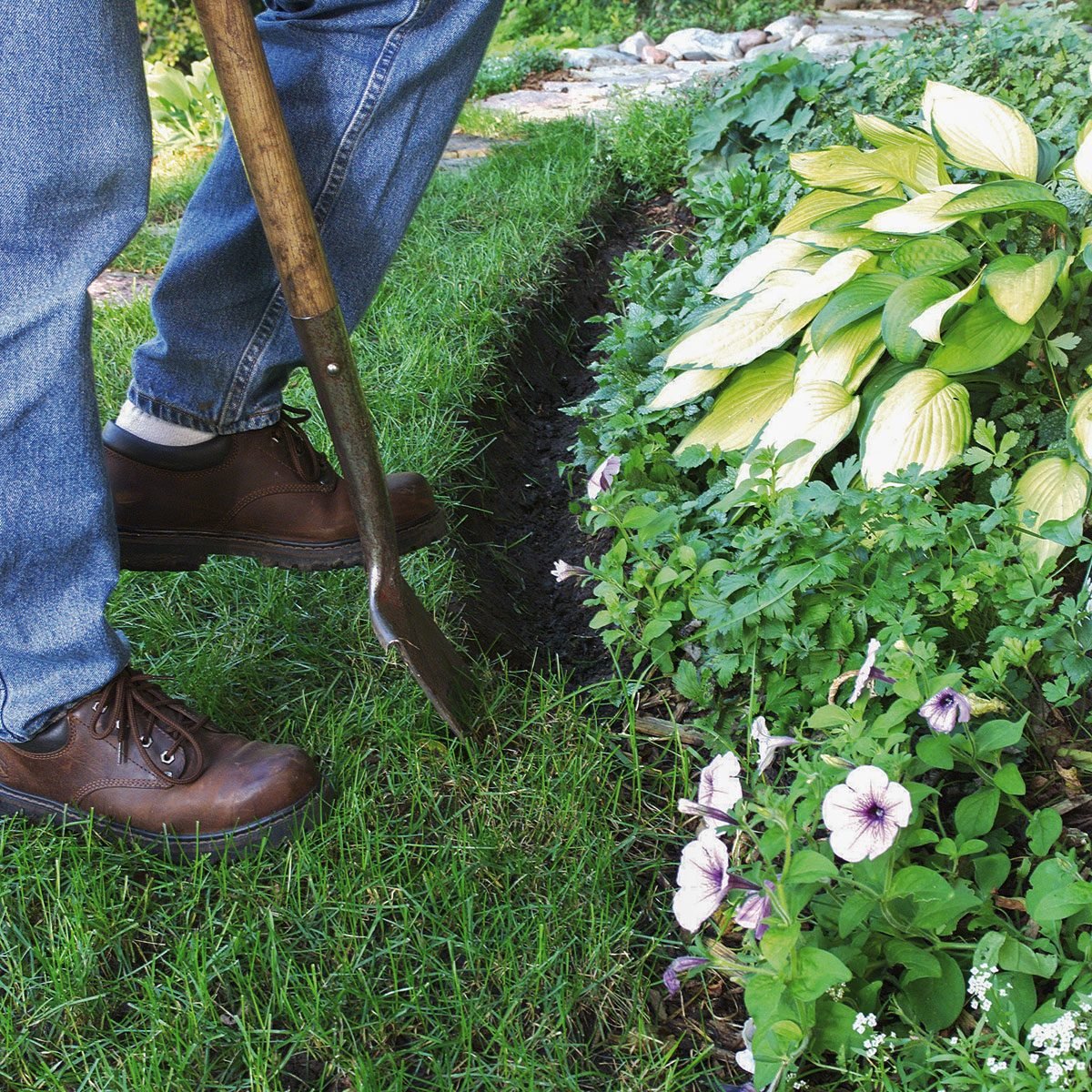
Ditch Plastic Landscape Edging for Natural Mulch

Trench landscape edging looks great in informal garden settings. Use trench edging as a border around spreading evergreens or groundcovers or in areas where vinyl or other permanent landscape edging material would look too formal and unnatural. You can easily shift it if plants outgrow the bed.
An open trench holds back the adjacent grass better than a trench filled with mulch. But if you prefer a more finished look, fill it with mulch. You’ll have to redig the trench once in a while to keep it neat and to hold back the lawn, but it doesn’t take long and you can add the trimmings to your compost pile.
Digging a Planter Edging Trench

Dig a trench 4 to 6 in. deep and about 4 in. wide with a straight spade. Angle the sides outward at the top. Next, fill the planter edging trench with wood chips or other organic mulch for a more finished look and to deter weeds.
Benefits of Landscape Edging
Landscape edging not only makes your yard look sharp with neat lines around garden beds and pathways, but it also keeps everything in place, preventing soil erosion and stopping pesky plants from taking over where they shouldn’t. Plus, it makes yard work like mowing and weeding a whole lot easier, giving you more time to kick back and enjoy your outdoor space.



















